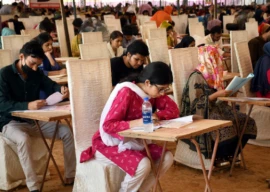
There are indications that the havoc caused is partly a result of man-made factors. Experts in Chitral point out that water pipes laid in the area were sub-standard and have been destroyed by the floods, leaving villages without access to clean drinking water. Similar issues have been reported in other areas and concern has also been expressed about the lack of warning to people, the lack of ability to evacuate them in time and limited awareness at the community level on what measures to take when faced with disaster. These are all factors that bodies such as the NDMA and other organisations working with it need to consider carefully. The reality is that we are a country prone to many different kinds of calamities. The fact that so many of our people live in inadequate shelters makes them all the more vulnerable to the forces of nature and it is therefore all the more necessary that we protect them better.
Published in The Express Tribune, July 30th, 2015.
Like Opinion & Editorial on Facebook, follow @ETOpEd on Twitter to receive all updates on all our daily pieces.

1735196035-0/beyonce-(7)1735196035-0-165x106.webp)




1735025557-0/Untitled-(96)1735025557-0-270x192.webp)











COMMENTS
Comments are moderated and generally will be posted if they are on-topic and not abusive.
For more information, please see our Comments FAQ